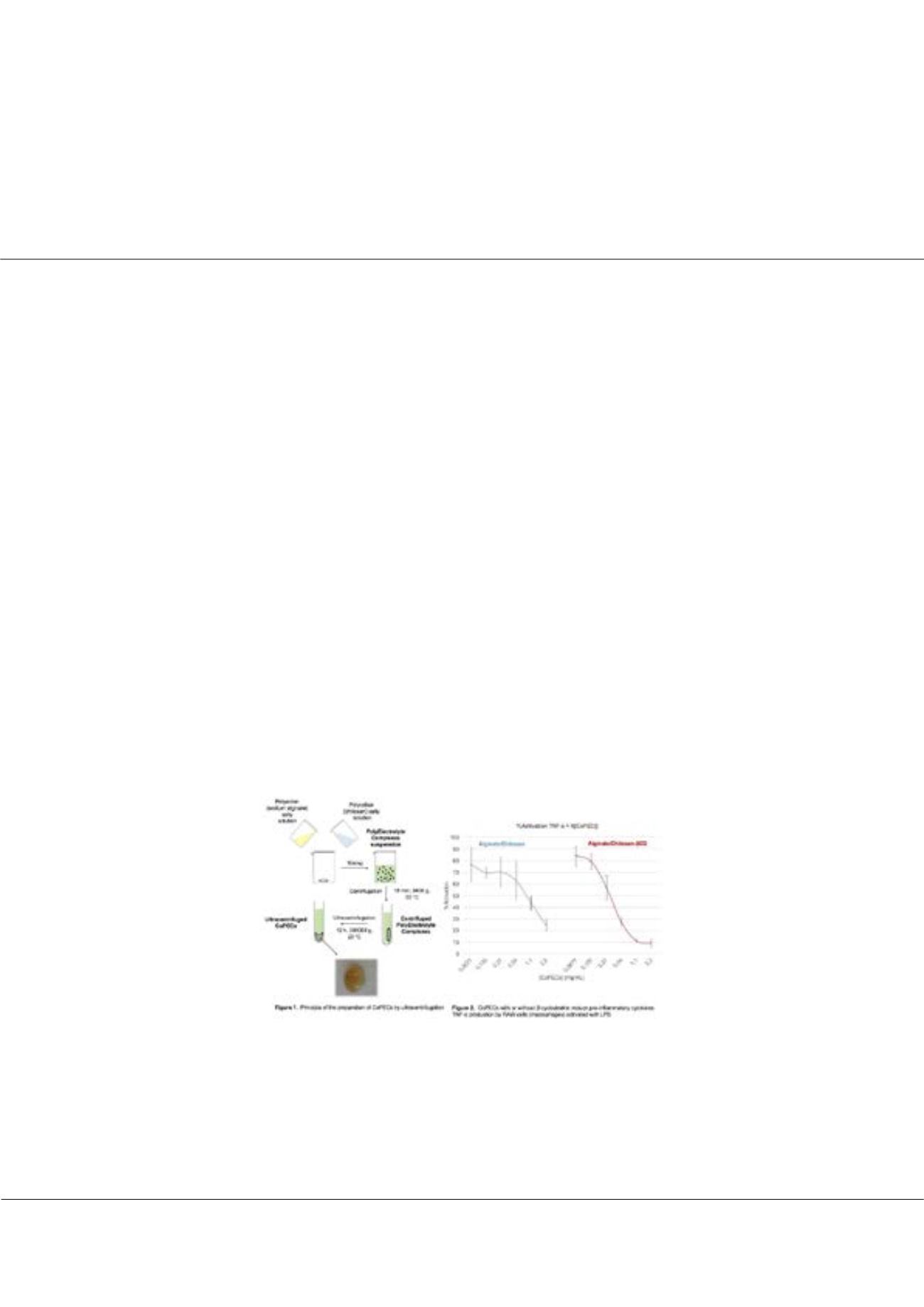

Page 68
conferenceseries
.com
Volume 8
Journal of Biotechnology and Biomaterials
ISSN: 2155-952X
Biomaterials 2018
March 05-06, 2018
March 05-06, 2018 | Berlin, Germany
3
rd
Annual Conference and Expo on
Biomaterials
Notes:
b-cyclodextrin-linked chitosan/alginate compact polyelectrolyte complexes (CoPECS) as natural and
functional biomaterials with intrinsic anti-inflammatory activity
Alexandre Hardy, Marcella De Giorgi, Cendrine Seguin, Anais Brion, Joseph Hemmerlé, Philippe Lavalle, Pierre Schaaf, Sylvie Fournel, Line Bourel
Bonnet
and
Benoît Frisch
Université de Strasbourg, France
Statement of the Problem:
Nowadays, the development of functional biomaterials able to contain and release drugs is of increasing
interest for the treatment of various diseases and inflammation states. Synthetic Compact Polyelectrolyte Complexes (CoPECs),
have shown interesting properties such as self-healing and stretching abilities or capacity to immobilize and protect enzymes. Very
recently, alginate and chitosan natural polyelectrolytes, in the form of CoPECs, have been described as promising candidates for
the development of high-performance biomaterials.
Purpose:
The purpose of the current study is to functionalize this new natural CoPEC and to evaluate its potential as anti-
inflammatory functional biomaterial. Indeed, one of its constituents, chitosan, is already known to have anti-inflammatory effects.
Methodology & Technical Orientation:
Chitosan was chemically modified with b–cyclodextrin and mixed with alginate to make
a final CoPEC able to trap and release drugs. The ratio between the two constituents of the material was determined by titration of
the fluorescently labeled alginate. The intrinsic anti-inflammatory potential of the functionalized material, as well as its effect on
cell viability, were assessed through
in vitro
assays.
Findings:
Functionalized CoPEC is non-cytotoxic and causes a decrease of the production of NO and of pro-inflammatory cytokine
TNF-a by macrophages previously activated with LPS. In addition, the biomaterial attenuates the differentiation of macrophages,
which corroborates its anti-inflammatory action.
Conclusion & Significance:
Given its anti-inflammatory efficacy and the multitude of final shapes it can take (crude material,
membrane, micro- and nanoparticles), b-cyclodextrin-linked chitosan/alginate CoPEC could be used as anti-inflammatory
biomaterial with the ability to deliver additional drug for combined treatment of severe chronic diseases such as Crohn’s disease,
arthritis or cancer.
Recent publications
1. Porcel C H and Schlenoff J B (2009) Compact polyelectrolyte complexes: saloplastic candidates for biomaterials.
Biomacromolecules 10(11):2968-2975.
Alexandre Hardy et al., J Biotechnol Biomater 2018, Volume 8
DOI: 10.4172/2155-952X-C1-088
















